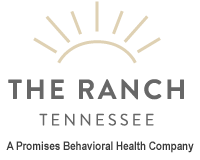It’s no longer just teens you need to worry about overdrinking or abusing drugs. Turns out your parents or even grandparents are increasingly binge drinkers and pain pill abusers, and the problem is tackled in a new book, Substance Use and Older People. Baby boomers, at an estimated 76.5 million strong and their “high substance use rate,” are at the core of the rise. According to an online report in the journal Addiction, the number of adults 50 and older of any gender, race or ethnicity with substance use disorder is expected to double, from 2.8 million in 2006 to 5.7 million in 2020. Yet for the most part, this growing substance use among the older population has remained “under the radar,” says Dan G. Blazer, MD, PhD, a professor emeritus of psychiatry and behavioral sciences at Duke University Medical Center in Durham, North Carolina.
Book Only Looks at the “Over 65s”
Dr. Blazer, a psychiatrist and epidemiologist, has done extensive research for the federal government on the scale of the mental health problem and the healthcare workforce needed to treat it, including research with Duke University Medical Center psychiatry professor Li-Tzy Wu, ScD, RN, MA. He also wrote the forward of this new book she co-edited — a compendium meant for members of the healthcare field and for students. “The book is one of the first, if not the first, that deals with substance abuse in the older person,” Blazer says of what will likely serve health professionals and students as a reference book. “It’s under-recognized by just about everyone, including physicians. You think of substance abuse being an adolescent problem.”
Not the Health Threat You Expect
When it comes to the mental health of older people, the first thoughts are usually of Alzheimer’s disease, dementia, depression and anxiety, for good reason. The substance abuse problem among older Americans is still relatively low overall. The concern comes with the growth rate of it amid a ballooning aging population. Alcohol is the substance that’s most abused, the book says, followed by prescription medications, particularly opiates. A study that Blazer and Li-Tzy Wu researched in 2009 found that among people 65 and older, 14 percent of men and 3 percent of women reported binge drinking at least once that year. Binge drinking is defined as having enough drinks in approximately two hours to raise the blood alcohol concentration to .08 — which is typically 5 or more drinks for men and 4 or more drinks for women — in one episode.
Drug Deaths Rising
Further evidence for concern is that the drug overdose death rate has increased since 2004 across all groups, including age and gender. From just 2011 to 2012, overdose death rates increased “significantly” for those 45 to 65 and older, according to the National Center for Health Statistics. Drug overdoses among the middle aged rose 4 percent in those years and increased 7 percent for those 65 and older. The point of focus on the middle-aged user is they will soon join the older group. Even up to a day after taking sleep, anxiety or opiate drugs, older people are reported to fall more — in nursing homes the frequency rises by 70 percent — drive more dangerously, and suffer increased memory and cognitive problems, researchers say. These numbers prompted the U.S. Department of Health and Human Services to commission a report looking at the prevalence of substance abuse and the adequacy of treatment. Its conclusions are a widely cited source in the new book as well as in other research. In the report, titled “The Mental Health and Substance Use Workforce for Older Adults,” the committee reported that “at least 5.6 million to 8 million — nearly one in five — older adults in America have one or more mental health and substance use conditions, which present unique challenges for their care. With the number of adults age 65 and older projected to soar from 40.3 million in 2010 to 72.1 million by 2030, the aging of America holds profound consequences for the nation.”
The Need for Attention Is Now
Adding urgency to the situation is the fact that the workforce to treat the growing population of older addicts isn’t increasing and is inadequately trained in both geriatrics and addiction, the book editors conclude. Older people with substance abuse are particularly needy of care due to natural declines, metabolism changes and additional medications for other conditions that may come with age. By Nancy Wride


